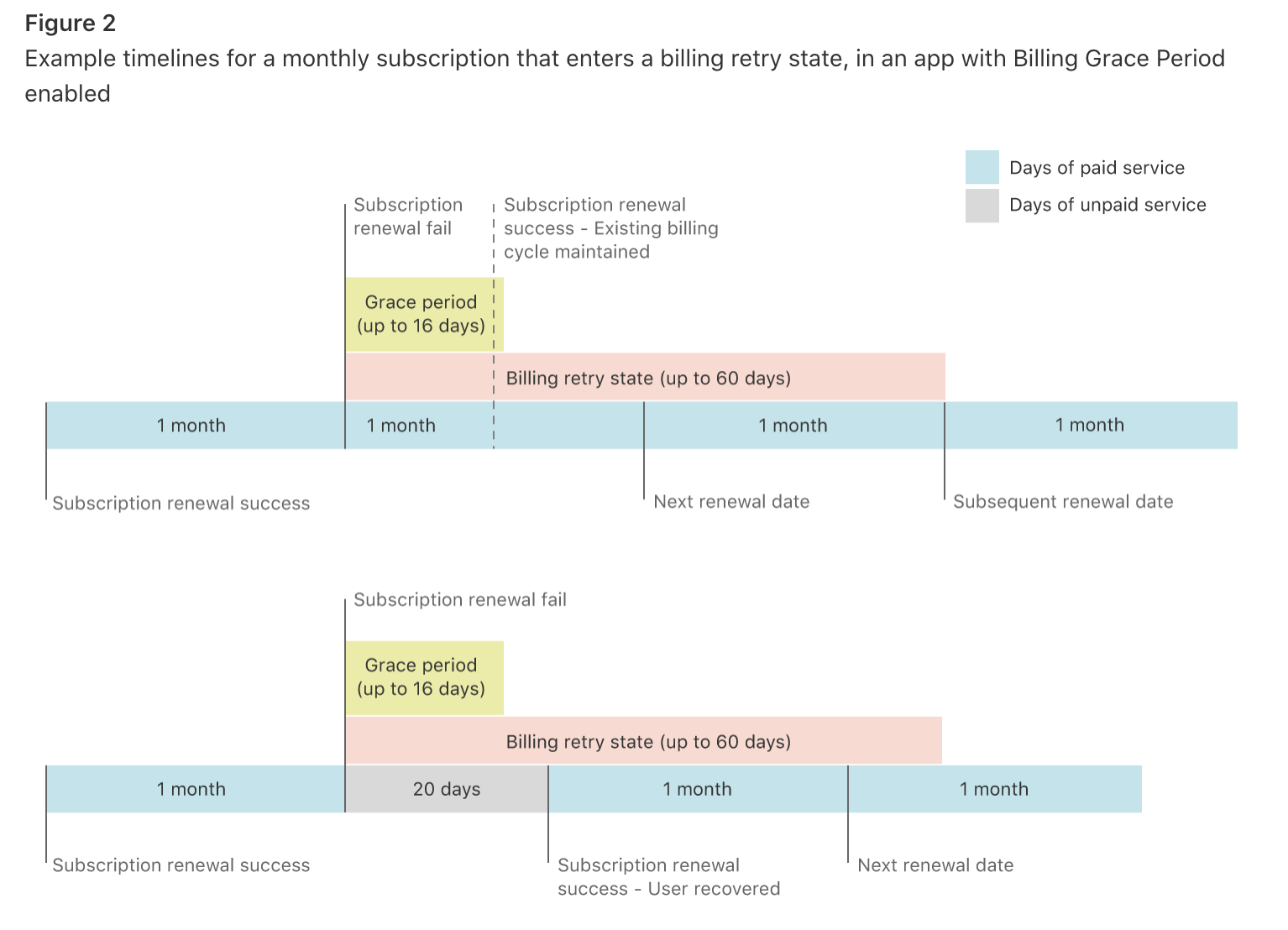
Apple is changing how subscriptions work on its App Store. Before, any lapse in payment could cut off the customer from being able to use the app’s subscription-based features — and make it more difficult for the developer to reacquire that customer’s business in the future. Now, Apple says developers will have the option to instead offer a “grace period” for auto-renewable subscriptions, which gives Apple more time to collect payment on the developer’s behalf.
Lapsed payments can occur for many reasons — like expired credit cards, changes in addresses requiring an update of the billing ZIP code, corporate cards getting shut off because your company’s expense program is ridiculous (ahem), credit cards that get disabled by the bank and so on. This sort of involuntary churn means developers were losing out on revenue not because the customer had wanted to end their subscription, but because of a simple billing issue.
The new Grace Period — which is opt-in, not opt-out on the developer’s part — is enabled from App Store Connect, where developers manage their apps. Here, you can navigate to “My Apps,” then in the toolbar click Features –> In-App Purchases, and in the new Billing Grace Period section, click “Turn On.”

Of course, there’s a bit more to it than that when it comes to actually integrating support in the app itself, but for many developers, it may be worth the extra effort to more easily retain their customers going forward.
According to Jacob Eiting, the CEO of in-app subscription startup RevenueCat, those implementation difficulties could turn off some developers.
“Grace period on iOS would be a big win for users, but the fact that developers have to opt-in and build server-side support means that practically few apps will get around to supporting it,” he predicts. Plus, he points out that Apple is playing catch up, as Google Play has supported grace periods since 2018.
“Google’s implementation just works, developers don’t need to write additional code,” Eiting added. “However, as always, I’m glad to see Apple investing in the subscription experience on iOS. It’s the best way for app developers to monetize and creates much better alignment between developers and users than any other strategy,” he said.
Once enabled, Apple’s documentation says it will attempt to collect payment for either six or 16 days, depending on whether the subscription duration is weekly or monthly or longer, respectively. Meanwhile, the customer retains full access to the app’s paid content.
If the subscription is renewed within this period, there won’t be any interruption to the days of paid service or to the developer’s revenue.
If the user resubscribes after 60 days, the days of paid service will reset and the developer will receive 70% of the subscription price until one year of paid service passes. (After the first year, Apple cuts its revenue share, allowing developers to retain 85% of the subscription.)
Subscription revenue is critical to developers, as the App Store has shifted away from paid downloads toward recurring revenue streams.
According to data from Sensor Tower, 70% of the top 100 grossing iOS apps last month were subscription-based and accounted for 81% of revenue. That’s up from 42% of the top 100 apps five years ago in August 2015 which accounted for 54% of revenue.
For developers, subscriptions mean a more sustainable business. And for Apple, subscriptions are a huge part of its growing “services” business, which includes App Store revenues, along with its own subscriptions like Apple Card, iCloud, Apple Music, Apple News+, Apple TV+ and its Apple Pay business.
In Q3, services revenue increased 13% to $11.46 billion from $10.17 billion a year earlier, and now accounts for a fifth of Apple’s revenue. As Apple now has a growing line of subscription products of its own, it makes sense that it would want to better design the overall subscription offering to make it easier to handle common billing problems, too.